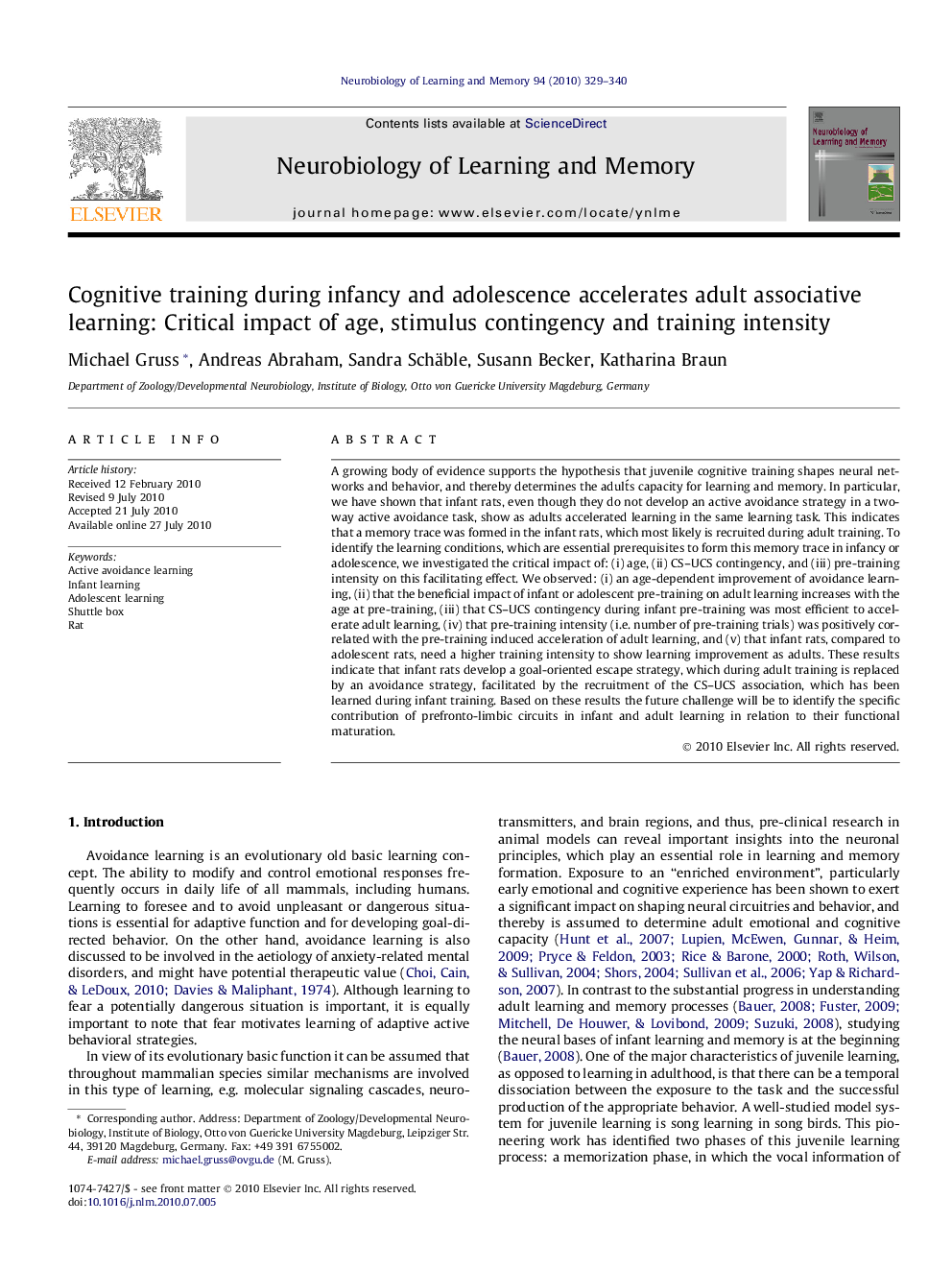| Article ID | Journal | Published Year | Pages | File Type |
|---|---|---|---|---|
| 7301400 | Neurobiology of Learning and Memory | 2010 | 12 Pages |
Abstract
A growing body of evidence supports the hypothesis that juvenile cognitive training shapes neural networks and behavior, and thereby determines the adult´s capacity for learning and memory. In particular, we have shown that infant rats, even though they do not develop an active avoidance strategy in a two-way active avoidance task, show as adults accelerated learning in the same learning task. This indicates that a memory trace was formed in the infant rats, which most likely is recruited during adult training. To identify the learning conditions, which are essential prerequisites to form this memory trace in infancy or adolescence, we investigated the critical impact of: (i) age, (ii) CS-UCS contingency, and (iii) pre-training intensity on this facilitating effect. We observed: (i) an age-dependent improvement of avoidance learning, (ii) that the beneficial impact of infant or adolescent pre-training on adult learning increases with the age at pre-training, (iii) that CS-UCS contingency during infant pre-training was most efficient to accelerate adult learning, (iv) that pre-training intensity (i.e. number of pre-training trials) was positively correlated with the pre-training induced acceleration of adult learning, and (v) that infant rats, compared to adolescent rats, need a higher training intensity to show learning improvement as adults. These results indicate that infant rats develop a goal-oriented escape strategy, which during adult training is replaced by an avoidance strategy, facilitated by the recruitment of the CS-UCS association, which has been learned during infant training. Based on these results the future challenge will be to identify the specific contribution of prefronto-limbic circuits in infant and adult learning in relation to their functional maturation.
Related Topics
Life Sciences
Neuroscience
Behavioral Neuroscience
Authors
Michael Gruss, Andreas Abraham, Sandra Schäble, Susann Becker, Katharina Braun,
